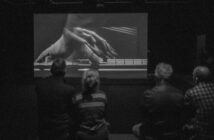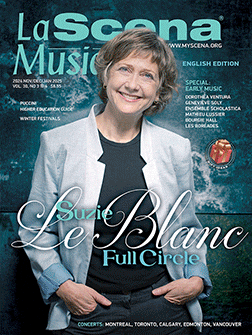by Paul E. Robinson
Not even the greatest of composers has left the world a portfolio of only masterpieces – a case in point being Franz Liszt (1811- 1886), undoubtedly one of the most famous composers who ever lived.
The Austin Symphony recently celebrated the Liszt bicentennial by programming the composer’s Piano Concerto No. 1 and Totentanz for piano and orchestra; the former remains solidly in the standard repertoire, while the latter barely qualifies for even an occasional performance.
Music director Peter Bay was hedging his bets in honouring Liszt. He gave us two Liszt works for piano and orchestra with Italian pianist Benedetto Lupo, but devoted the rest of the concert to works by Mozart and contemporary composer Mark Edwards Wilson.
In my opinion, Bay could have created a more interesting Liszt celebration with the addition of symphonic poems such as Orpheus or Mazeppa, or by going for broke with A Faust Symphony.
Liszt’s “sometime” assistant Joachim Raff used to run around claiming that it was he who orchestrated all of Liszt’s works at Liszt’s request. There is, however, strong evidence to the contrary. The truth notwithstanding, Liszt was only intermittently successful as a composer of orchestral music; his supreme achievements were in the realm of piano literature, written to show off the master’s prowess as a travelling virtuoso. Much of this repertoire is clever and entertaining; even more of it is shallow and silly.
Lupo’s Liszt Exciting but One-Dimensional The Piano Concerto No. 1 is showy music, but it is redeemed by tight construction and heartfelt lyricism. Benedetto Lupo (photo: right) tossed off the fireworks with great aplomb, without really getting much below the surface of the music.
The Piano Concerto No. 1 is showy music, but it is redeemed by tight construction and heartfelt lyricism. Benedetto Lupo (photo: right) tossed off the fireworks with great aplomb, without really getting much below the surface of the music.
On the other hand, he had no such challenge in Totentanz since the piece has no depth whatsoever. It is 15 minutes of variations on the four-note sequence from the Thirteenth Century chant known as Dies Irae. Used in this way, this four note sequence wears out its welcome as quickly as Liszt runs out of interesting ideas. But then, the point of performing the Totentanz – if there is one – may be to allow the soloist to impress audiences with the number of notes he/she can play in the shortest possible time; it is, as it was in this instance, a crowd pleaser! From my perspective, Totentanz may ultimately be of more value to the Guinness Book of Records than to serious musical literature.
One might describe Liszt’s treatment as “all icing and no cake, “ whereas Berlioz’s use of the same sequence in the final part of his Symphonie Fantastique suits very well the story he is telling in music. More recently, Rachmaninov used the same sequence with great imagination in his Rhapsody on a Theme of Paganini and Symphonic Dances.
So that was it for our Liszt celebration, and after Totentanz, not a moment too soon.
Wilson’s Phoenix Does Not Rise to the Occasion! Unfortunately, it was followed by a recent work called The Phoenix by University of Maryland composer Mark Edwards Wilson (photo: right). By way of introduction in the programme notes, Mr. Wilson gave us a great deal of high-minded nonsense about birds in American Indian, Hindu, Chinese and Egyptian cultures. Apparently “the piece journeys through a series of strongly defined tonal centers, yet it does so using methods that liberate it from the traditional tonic/dominant hierarchy. Similarly, I have felt liberated from the strictures of writing in a conventional academic style, whether those strictures are tonal or atonal in nature.” Huh? I guess it loses something in the translation.
Unfortunately, it was followed by a recent work called The Phoenix by University of Maryland composer Mark Edwards Wilson (photo: right). By way of introduction in the programme notes, Mr. Wilson gave us a great deal of high-minded nonsense about birds in American Indian, Hindu, Chinese and Egyptian cultures. Apparently “the piece journeys through a series of strongly defined tonal centers, yet it does so using methods that liberate it from the traditional tonic/dominant hierarchy. Similarly, I have felt liberated from the strictures of writing in a conventional academic style, whether those strictures are tonal or atonal in nature.” Huh? I guess it loses something in the translation.
After a promising opening melody in cellos and basses, Mr. Wilson’s music settles into workmanlike sequences, which the members of the Austin Symphony duly played with workmanlike competence.
Mozart with Style Steals the Show
And what about the Mozart? What can one say about the great G minor symphony, except that it nearly always outclasses any other piece that appears on the same programme. Peter Bay had lavished exceptional care on its preparation for this concert and the ASO players responded accordingly. Tempos sounded just right for all four movements and the “Mozart style” was ideal, at least as Bruno Walter would have understood it. That said, purist Nikolaus Harnoncourt may not nave agreed.
Paul E. Robinson is the author of Herbert von Karajan: the Maestro as Superstar, and Sir Georg Solti: His Life and Music. NEW for friends: The Art of the Conductor podcast, Classical Airs.
Maestro Peter Bay: photo by Marita
Liszt’s 200th All Icing No Cake!
0
Share:













